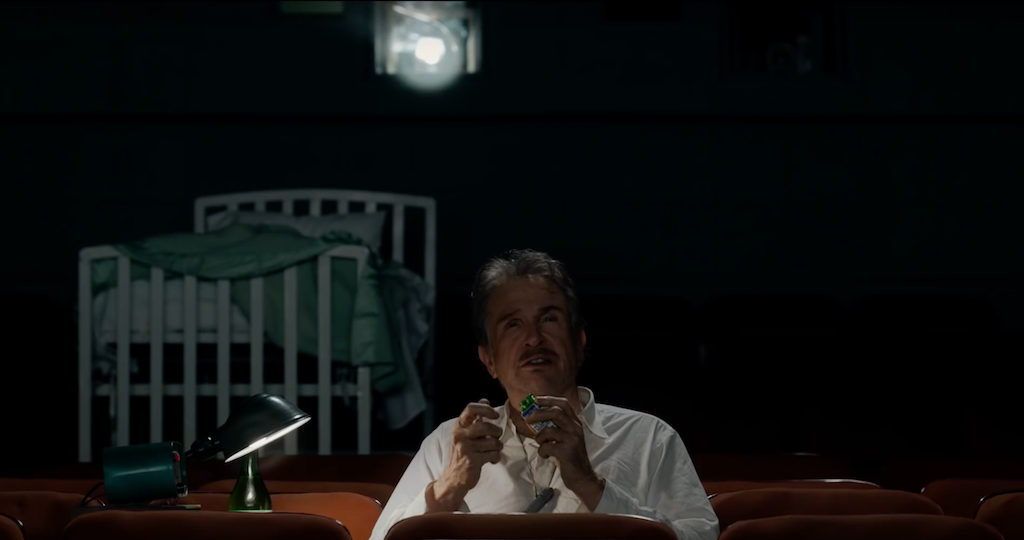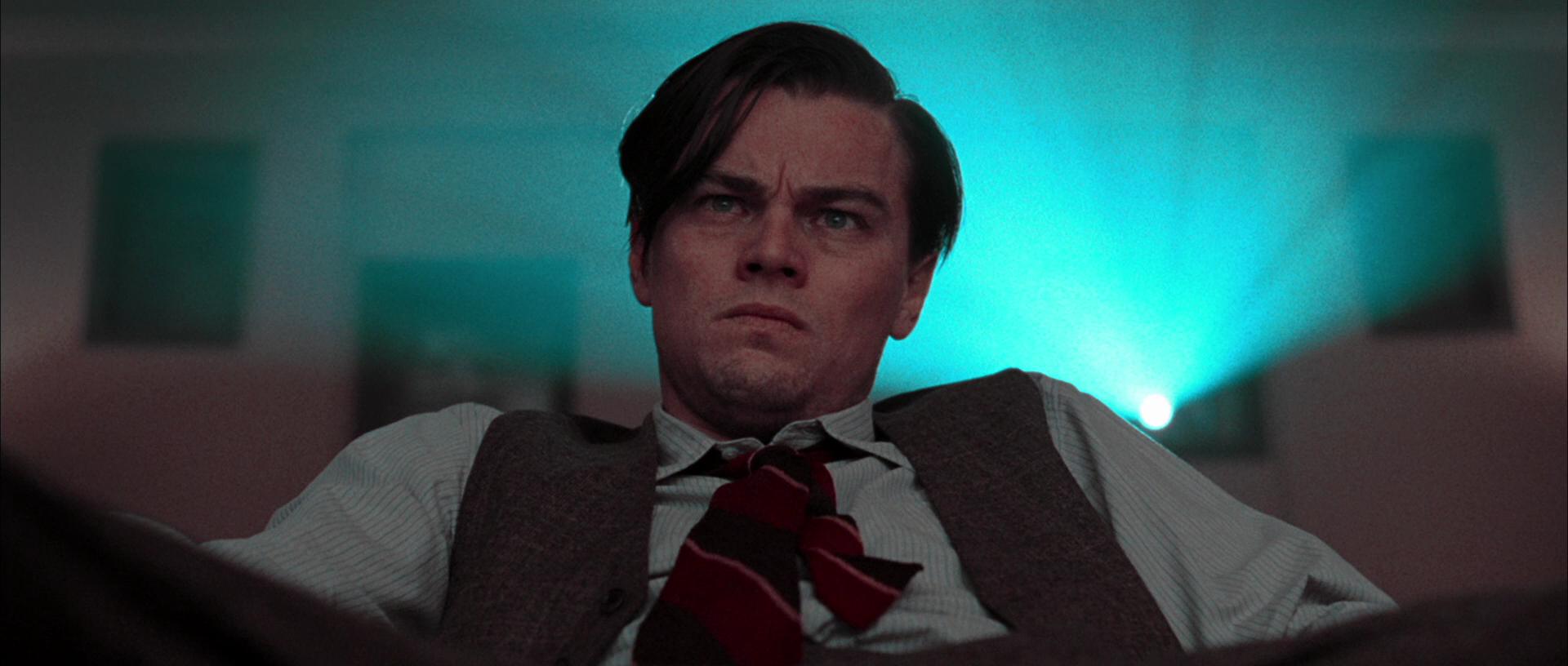Few 20th-century American lives were more glamorous, adventuresome, or eccentric than that of Howard Hughes, a dashing figure of great ingenuity and fame who nonetheless spent his last decades fully indulging drug-addled paranoias in Fort Knox-like seclusion. While never abandoning his identities as an engineering prodigy and aviation maverick (at one point he held the speed record for round-the-world flight), the native Texan also stormed Hollywood early on. From the tender age of twenty-one, he commenced a long, off-and-on relationship to the film industry that encompassed everything from directing features to owning a major studio. There, as in all things, his decisions and behaviors were often as bizarre as they were bold.
The new film Rules Don’t Apply continues Hollywood’s own fascination with this compelling figure, who’s been dead now for forty years. It’s produced, directed, and co-written by star Warren Beatty, who shares many overlaps with his subject: He too has worn many hats (albeit mostly within the film industry), been linked romantically to numerous high-profile beautiful women, is nevertheless prickly about his privacy, and is a reputed perfectionist whose projects have often been very long in the making. None more so than Rules, which represents the seventy-nine-year-old star’s first movie role in fifteen years—and his first directorial effort since 1998, when he played the titular figure in Bulworth (which he also co-wrote), one of the all-time great screen political satires.
Beatty had reportedly been wanting to make a film about Howard Hughes since the early 1970s. His screenplay mixes fact and fiction to portray the billionaire tycoon in the late Fifties through early Sixties, when he was still a significant figure in the worlds of both aviation and Hollywood, yet had become so reclusive that some doubted his sanity—or even whether he was still alive. (Such speculations would only increase in the years before his death in 1976, at age seventy.)
Fudging real-world chronology a bit, it posits him as still controlling second-rung studio RKO in 1958. (In truth RKO barely existed at that point, and Hughes had sold his stake in it three years earlier.) He uses it as a personal “stable” for gorgeous young women aspiring to be movie stars—although as Rules Don’t Apply illustrates, some of them rarely if ever met their elusive benefactor. Among them here is fictive talent contest winner Marla Mabrey (Lily Collins), a wide-eyed Baptist naif from Virginia who arrives with her even more prudish mother (Beatty’s offscreen spouse Annette Bening).
She’s assigned a chauffeur in the form of amiable, ambitious Frank (Alden Ehrenreich), who unbeknownst to her is also expected to act as a spy—and never, ever to get romantically involved with his passenger, as Hughes prefers not to “share” his starlets with anyone even when he’s ignoring them himself. Nonetheless, sparks fly between the two young people, even as their employer’s behaviors grow ever stranger. A sort of screwball romantic whimsy, Rules makes room for myriad big names in variably small parts, including Matthew Broderick, Alec Baldwin, Candice Bergen, Ed Harris, Martin Sheen, Steve Coogan, and Dabney Coleman.

It’s a beguiling tale, albeit one that offers just a few angles of insight on a real-life figure who’s already been the subject of numerous books, as well as inspiration for video games, comic books (notably Iron Man), and more. Hughes’ screen history alone—both as a filmmaker and as a dramatized character—was already a rich one long before erstwhile Bonnie and Clyde and Reds star Beatty finally weighed in.
Hughes’ own movie career was a whopping example of a rich man treating the industry like a private toy, with money no object—many films he was involved with ran vasty over-schedule and budget as he endlessly tinkered with them. It is illustrative that the very first feature he produced, a 1926 vehicle for comedian Ralph Graves called Swell Hogan, has never been seen—simply because Hughes decided he didn’t like it.
Nonetheless, his subsequent producing efforts were successes, encouraging him to direct Hell’s Angels himself. That aviation epic took so long that it was a silent film virtually remade as a “talkie” before its 1930 release, becoming arguably the most expensive movie ever made to that point. Its aerial stunts were so risky that stunt pilots balked; Hughes had to perform many himself. He also had successes producing the classic first versions of hard-boiled stage comedy The Front Page and gangster tale Scarface. The latter, shockingly violent for its time, got him in hot water with the censors. Unsurprisingly, perhaps, he left the film industry for some years immediately afterward, as tougher enforcement of the Motion Picture Production Code made such violations of screen taboos near-impossible.
When he returned with his second and last official directorial feature, it was deja vu all over again: The Outlaw was a western in which Billy the Kid (Jack Beutel) took a distant backseat to the more curvaceous appeal of fictive “Rio McDonald,” played by Hughes discovery Jane Russell. Hughes’ attention to her bustline grew so obsessive that he engineered a special bra to “uplift” it; then his sparring with censors kept the finished film from general release five full years, until 1946. (The story goes that when Code enforcers objected to the line “You stole my gun, now I steal your girl,” Hughes offered the substitution “Tit for tat,” at which point the earlier version was hastily approved.)
In 1948 Hughes acquired a controlling stake in RKO, which despite notable highlights (including King Kong, Citizen Kane, and the Astaire–Rogers musicals) had long struggled to keep up with the bigger likes of MGM and Paramount. If anything, his involvement hastened its demise. Its commercial fortunes continued to fall while he preoccupied himself with anti-Communism and the promotion of his latest pet starlets (notably Faith Domergue as well as the popular Russell). As with Hell’s Angels and The Outlaw, his meddling dragged out the production of certain films to absurd length—the John Wayne vehicle Jet Pilot, shot in 1950, got fussed over so long that it was finally released by another studio entirely in 1957.
Other eccentricities in his later film resume included Son of Sinbad, a 3D kitsch fest featuring famous stripper Lili St. Cyr; and The Conqueror, which became infamous not only as a camp classic (Wayne was ludicrously cast as Genghis Khan) but because nearly all its cast and crew eventually died of cancer. No one at the time had grasped the radiation risk of shooting in desert locations perilously close to government nuclear test sites. (Hughes reportedly felt so guilty over this that he withdrew all prints from public circulation for years after the original release.)

As a character onscreen, Howard Hughes has built an equally long and idiosyncratic resume, though albeit one has begun safely after his death. (He was clearly a model for a key if just briefly-seen figure in the 1971 James Bond opus Diamonds Are Forever, and just weeks after his demise was parodied by Dan Aykroyd in a first-season Saturday Night Live sketch.) The most famous portrayal is Leonardo DiCaprio’s in Martin Scorsese’s 2004 The Aviator—though many thought that shows stolen by Cate Blanchett’s Oscar-winning turn as yet another famous paramour, Katharine Hepburn. It covered Hughes at the peak of his public life, from 1927 to 1947. A similar sprawling biographical overview was taken by the acclaimed four-hour 1977 TV movie The Amazing Howard Hughes, with Tommy Lee Jones in the title role.
The secrecy and weird rumors that surrounded Hughes’ final years—when he holed up in various Las Vegas hotel penthouses, minded by an alleged “Mormon Mafia”—led to wild speculation, and exploitation. Assuming his subject was too far gone as a hermit to issue a public denial, author Clifford Irving published a fake Hughes “memoir” in 1972, but wound up serving prison time for his scam. Orson Welles’ playful 1974 documentary F for Fake has a section about this elaborate con, while thirty-two years later Richard Gere played Irving in The Hoax, Lasse Halstrom’s engaging replay of the whole scandal.
A more benign movie spinoff was future Silence of the Lambs director Jonathan Demme’s 1980 Melvin and Howard. (Its screenplay was by Bo Goldman, who also worked over the decades on Beatty’s long-gestating Hughes project.) A disputed will found after Hughes’ death mysteriously bequeathed $156 million to one Melvin Dummar, a Utah gas station attendant who claimed to have given a disheveled old man a ride in 1967—that man supposedly being Hughes, something not entirely implausible given the latter’s crazy whims and erratic actions. Not a popular hit, this disarming comedy about very ordinary people thrust into the spotlight by outlandish fate nonetheless won a slew of awards, including an Oscar for its screenplay and for Mary Steenbergen’s performance as Mrs. Dummar; Jason Robards was nominated as Hughes.
Perhaps the oddest and surely most obscure Hughes depiction to date, however, was made by fellow Texan Larry Buchanan, a confessed “schlockmeister” who wrote, directed, and produced nearly thirty features in the drive-in era. While many were the exploitation of a kind readily explained by their lurid titles (Zontar: The Thing From Venus, Naughty Dallas, Under Age, etc.), others betrayed a curious penchant for freely fictionalizing the dead and notorious. Thus Buchanan made grade-Z features about everyone from Pretty Boy Floyd and Lee Harvey Oswald to Janis Joplin and both “MM’s” (Marilyn Monroe and Mary Magdalene).
In 1977 he made the barely-seen Hughes and Harlow: Angels in Hell, which purports to dramatize an affair between Howard and platinum-blonde leading lady Jean Harlow on the set of Hell’s Angels. Never mind that in real life, the admittedly oft-lascivious Hughes by all accounts found her gauche and unappealing off-screen, making her that rare Hollywood starlet in which his interest remained strictly professional. He’d only been Resting-In-Peace a year when this travesty came out—but forty years later, it’s clear that Hollywood isn’t done mythologizing Howard Hughes yet.




